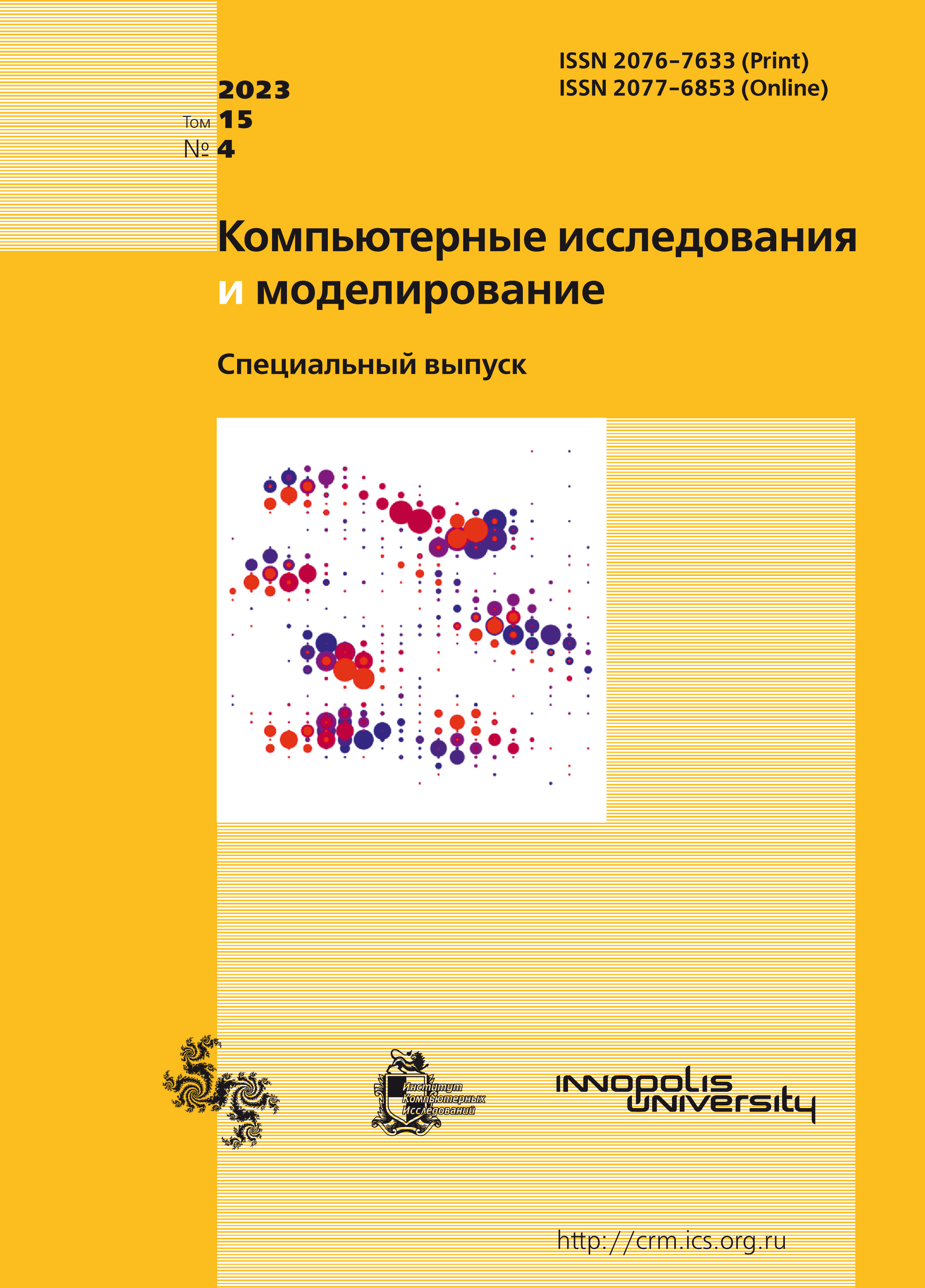All issues
- 2025 Vol. 17
- 2024 Vol. 16
- 2023 Vol. 15
- 2022 Vol. 14
- 2021 Vol. 13
- 2020 Vol. 12
- 2019 Vol. 11
- 2018 Vol. 10
- 2017 Vol. 9
- 2016 Vol. 8
- 2015 Vol. 7
- 2014 Vol. 6
- 2013 Vol. 5
- 2012 Vol. 4
- 2011 Vol. 3
- 2010 Vol. 2
- 2009 Vol. 1
Reduced mathematical model of blood coagulation taking into account thrombin activity switching as a basis for estimation of hemodynamic effects and its implementation in FlowVision package
 pdf (4272K)
pdf (4272K)
The possibility of numerical 3D simulation of thrombi formation is considered.
The developed up to now detailed mathematical models describing formation of thrombi and clots include a great number of equations. Being implemented in a CFD code, the detailed mathematical models require essential computer resources for simulation of the thrombi growth in a blood flow. A reasonable alternative way is using reduced mathematical models. Two models based on the reduced mathematical model for the thrombin generation are described in the given paper.
The first model describes growth of a thrombus in a great vessel (artery). The artery flows are essentially unsteady. They are characterized by pulse waves. The blood velocity here is high compared to that in the vein tree. The reduced model for the thrombin generation and the thrombus growth in an artery is relatively simple. The processes accompanying the thrombin generation in arteries are well described by the zero-order approximation.
A vein flow is characterized lower velocity value, lower gradients, and lower shear stresses. In order to simulate the thrombin generation in veins, a more complex system of equations has to be solved. The model must allow for all the non-linear terms in the right-hand sides of the equations.
The simulation is carried out in the industrial software FlowVision.
The performed numerical investigations have shown the suitability of the reduced models for simulation of thrombin generation and thrombus growth. The calculations demonstrate formation of the recirculation zone behind a thrombus. The concentration of thrombin and the mass fraction of activated platelets are maximum here. Formation of such a zone causes slow growth of the thrombus downstream. At the upwind part of the thrombus, the concentration of activated platelets is low, and the upstream thrombus growth is negligible.
When the blood flow variation during a hart cycle is taken into account, the thrombus growth proceeds substantially slower compared to the results obtained under the assumption of constant (averaged over a hard cycle) conditions. Thrombin and activated platelets produced during diastole are quickly carried away by the blood flow during systole. Account of non-Newtonian rheology of blood noticeably affects the results.
Copyright © 2023 Aksenov A.A., Zhluktov S.V., Kalugina M.D., Kashirin V.S., Lobanov A.I., Shaurman D.V.
Indexed in Scopus
Full-text version of the journal is also available on the web site of the scientific electronic library eLIBRARY.RU
The journal is included in the Russian Science Citation Index
The journal is included in the RSCI
International Interdisciplinary Conference "Mathematics. Computing. Education"






